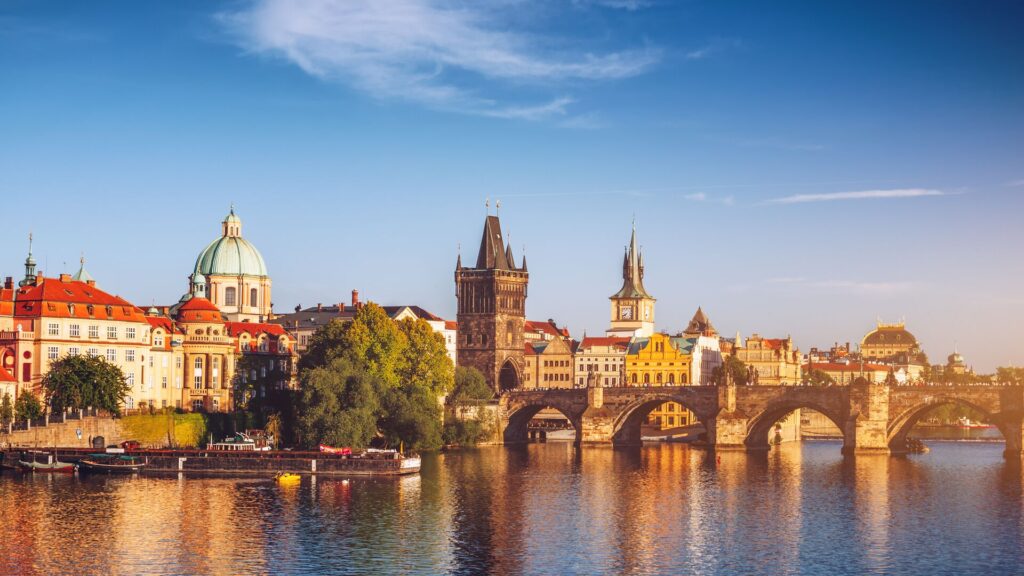7 Ways Our Best Of Ireland & Scotland Tour Will Capture Your Heart
Everything You Need to Know About the Good Friday Agreement
In 1998, after decades of conflict known as The Troubles, Northern Ireland witnessed a historic turning point—the signing of the Good Friday Agreement (also known as the Belfast Agreement). Signed on April 10, (Good Friday), the agreement brought an end to 30 years of sectarian conflict and not only marked the beginning of a new era for Northern Ireland, but also laid the groundwork for a more united and collaborative future.
Curious about one of the most significant peace accords of the 20th century? Traveling through Northern Ireland today offers the chance to walk in the footsteps of peacemakers, political prisoners, and everyday citizens whose lives were forever changed by the conflict—and the peace that followed.
Here’s everything you need to know about the Good Friday Agreement, and the key places you can visit today to understand the full story.

A Nation Divided: Understanding The Troubles
The Troubles began in the late 1960s, rooted in a long history of political and religious divisions. Catholic nationalists, many of whom felt discriminated against in housing, voting, and employment, campaigned for civil rights and Irish unity. On the other side stood Protestant unionists, who wanted to maintain Northern Ireland’s place in the United Kingdom.
It’s difficult to pinpoint the exact start of The Troubles, but many look to one key event in the city of Derry~Londonderry. On 5 October 1968, there was a nationalist civil rights march which was banned by the Northern Ireland government. Marchers defied the ban, which led to them being beat indiscriminately with more than 100 injured, including nationalist politicians. As civil rights marches escalated and tensions mounted, violence erupted—fuelled by paramilitary groups, state responses, and decades of mistrust.
📍The Museum of Free Derry stands in the Bogside, the site of pivotal events like the 1969 Battle of the Bogside and Bloody Sunday in 1972, when British soldiers opened fire on unarmed civil rights protesters. A visit to the museum places you right at the heart of where the civil rights movement ignited. Come here to learn about pivotal moments in The Troubles, telling the story from the community’s perspective and capturing the grassroots civil rights movement that ignited the conflict.
📍 Nearby, the Peacemakers Museum shines a light on how Bogside residents endured daily conflict—and how they eventually became vital peacemakers. It’s a deeply personal and emotional insight into the human cost of The Troubles.
📍To better understand unionist history and identity, head to the Siege Museum just a short walk away. Dedicated to the story of the Apprentice Boys and the 1689 Siege of Derry, it provides crucial context on unionist identity—rooted in history, culture and a sense of defence against perceived threats. Understanding this story is vital to understanding how historical memory shaped modern tensions.
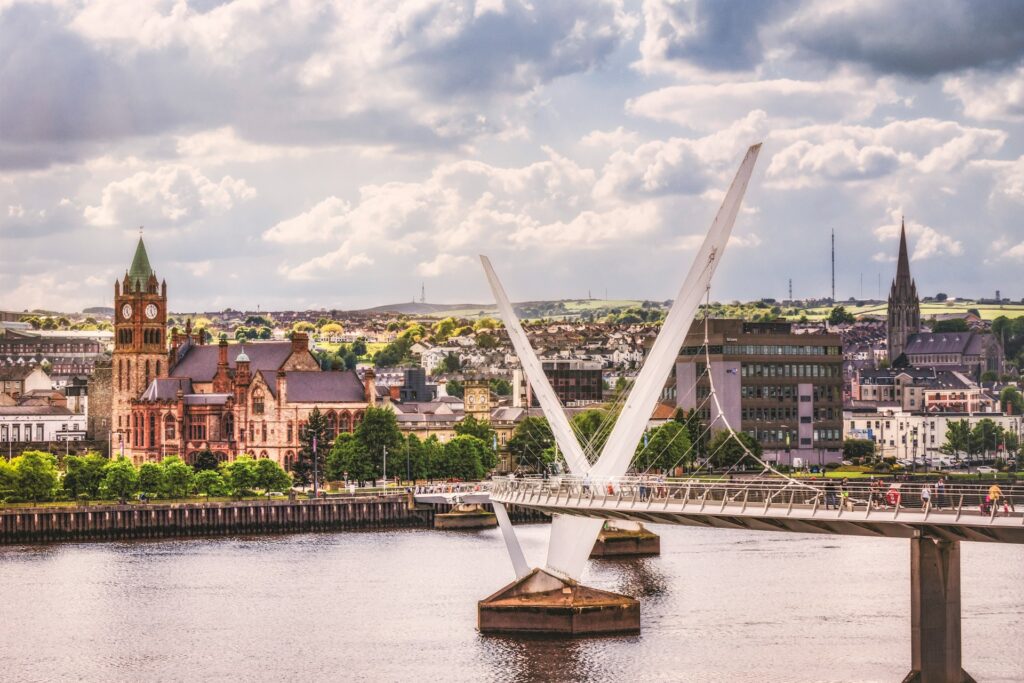
Londonderry’s Peace Bridge is an icon of Northern Ireland
Everyday Life Under Conflict
For over 30 years, bombings, assassinations, and political stalemates became the norm. Over 3,500 lives were lost, and tens of thousands more were changed forever. Yet amidst the violence, voices began to emerge calling for a better way. In Belfast, you can walk the line between past and present.
📍The Crumlin Road Gaol once held political prisoners from both sides—its echoing corridors tell the story of a deeply divided society. Today, you can walk the same tunnels that connected the prison to the courthouse and hear tales of escape, hunger strikes and reform.
📍For a broader look at Northern Ireland’s journey, the Ulster Museum in Belfast houses the ongoing Troubles and Beyond exhibition. It explores everything from bomb scares and peace marches to the cultural renaissance that followed the ceasefires.
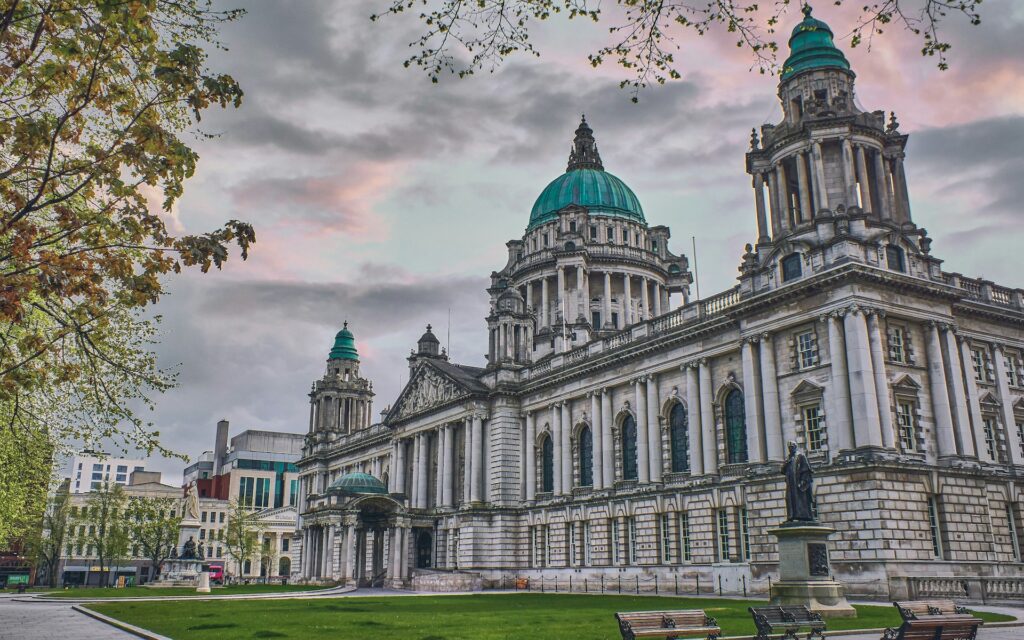
Belfast City Hall
Save up to $3,000* per couple on your first Premium Tour
Plus receive latest offers, travel inspiration, and discover how your travels will make a positive impact. Together, WE MAKE TRAVEL MATTER®. Subscribe NowThe Road to Peace
By the 1990s, the pressure to find a political solution had become undeniable. Secret meetings, shuttle diplomacy, and public referendums paved the way for a formal agreement. The process was long, complicated—and groundbreaking.
📍 Head to Hillsborough Castle, the backdrop of high-stakes negotiation. This elegant Georgian mansion played a key role in the peace process, hosting crucial talks with British and Irish politicians, American mediators, and local leaders. Today, visitors can tour the very rooms where decisions that changed the future of Northern Ireland were made.
📍 At the heart of the agreement? Shared power. That power now lives at Stormont, the seat of Northern Ireland’s devolved government. The striking neoclassical Parliament Buildings overlook Belfast from a hill—an icon of hope and the complex, ongoing work of democracy.
The Good Friday Agreement, signed on April 10, 1998, established a devolved government, cross-community power-sharing, and new relationships across Ireland and the UK. It also included provisions for disarmament, police reform, and human rights protections.
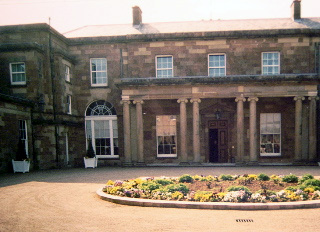
Memory and Moving Forward
While peace was secured, reconciliation has taken longer. Today, museums, libraries, and community groups work to preserve memory, promote understanding, and build bridges for the future.
📍 At Linen Hall Library in Belfast, you’ll find one of the most extensive archives on The Troubles. This historic library offers free exhibitions and access to newspapers, political ephemera, and oral histories—helping visitors understand how memory is preserved, and why it matters.
📍 In Derry, peace has a face—Nobel Peace Prize winner John Hume. The Guildhall pays tribute to this local hero who dedicated his life to non-violence, dialogue and European cooperation. Explore the exhibits, stained-glass windows, and civic rooms that celebrate Hume’s legacy and his central role in securing peace.
📍 Just a short walk away, the Tower Museum blends historical depth with cultural humour—especially through the new Derry Girls Experience, which captures the absurdity and resilience of life during conflict through the lens of the hit comedy series.
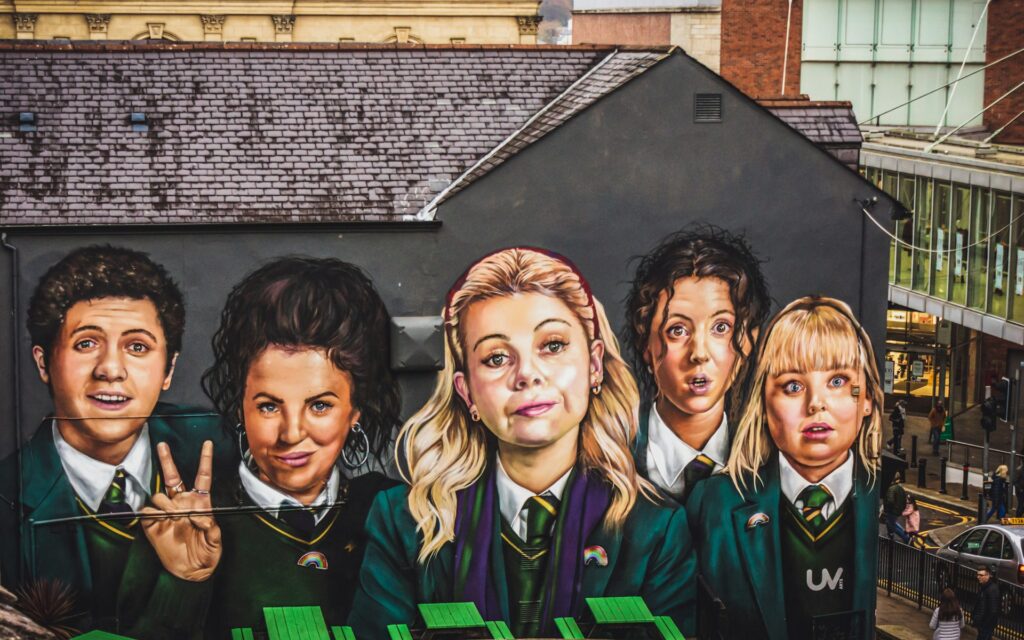
Mural of the hit UK show Derry Girls
Why Travel This Story Today?
Northern Ireland’s story is complex—but it’s also inspiring. Traveling through the landscapes of The Troubles and the Good Friday Agreement offers a rare chance to see how a society moves from division to dialogue. This isn’t just a lesson in politics—it’s a lesson in people. In perseverance. In peace. And it’s one worth walking through.
LIKED THIS POST? SHARE WITH YOUR COMMUNITY



